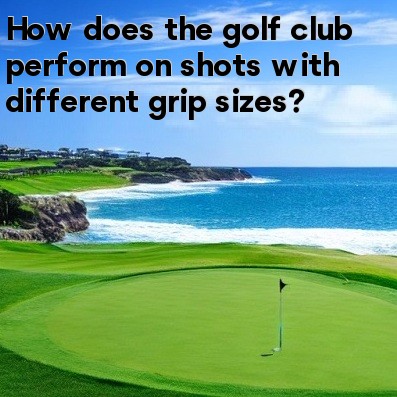
How Does Grip Size Affect Golf Club Performance?
When it comes to golf, the grip size of a golf club plays a significant role in the player's performance. While many golfers focus on other aspects like swing mechanics and clubhead speed, the grip size is often overlooked. In reality, it has a considerable impact on how well a golfer can control their shots. Let's explore how the grip size affects the performance of a golf club.
Strong Grip Size:
A strong grip size refers to a thicker grip, typically preferred by players with larger hands or those who like a more substantial feel in their hands. The primary advantage of a strong grip size is enhanced stability and control. With a thicker grip, players can generate more power and have better control over the clubface at impact. This added control allows them to shape their shots more effectively, controlling the trajectory and spin of the ball more precisely.
Additionally, a strong grip size can help reduce the influence of hand action during the swing. It prevents excessive wrist movement, reducing the chances of hooking or slicing the ball. This type of grip can be particularly beneficial for players who tend to struggle with a consistent ball flight or tend to miss shots to the left or right.
Standard Grip Size:
The standard grip size is the most common grip size found on golf clubs. It is suitable for players with average-sized hands or those who prefer a neutral feel on their clubs. A standard grip provides a good balance between control and feel. It allows players to comfortably grip the club while still having enough feedback through the hands to make adjustments during the swing.
While a standard grip size works fine for most golfers, it's important to note that personal preference plays a significant role. Some players may prefer a slightly thicker grip to combat grip pressure or enhance stability, while others may opt for a thinner grip to promote faster clubhead speed.
Undersized Grip Size:
An undersized grip size refers to a thinner grip favored by players with smaller hands or those who prefer a lighter feel on their clubs. While it may seem counterintuitive, an undersized grip can have some benefits. It allows players to have more control over their hands, promoting a more active release through impact.
Furthermore, an undersized grip can help players generate greater clubhead speed, primarily due to the reduced weight and increased wrist action. This can be advantageous for players seeking more distance off the tee or when trying to hit longer approach shots.
However, it's essential to strike a balance with grip size. An extremely undersized grip can lead to excessive hand action and decreased stability, resulting in less control over the clubface during the swing.
In conclusion,
When it comes to grip size, there is no one-size-fits-all approach. The optimal grip size depends on individual hand size, personal preferences, and swing characteristics. It's crucial for golfers to experiment with different grip sizes to find the one that suits them best. Whether it's a strong grip for added control, a standard grip for balance, or an undersized grip for increased speed, getting the right grip size can significantly enhance a golfer's performance on the course.





